Primary Research
Following on from last weeks primary research in which I left some string in the woods as a means to draw connections to my local environment and to ‘interact’ with it, I checked up on the string I had tied to the trees.
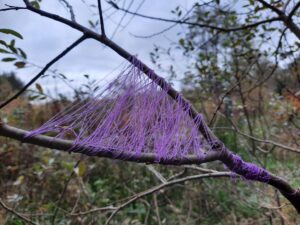
The only difference from last week was that this piece had caught a small leaf. I decided to take this piece and the hanging stones down as well to ensure no small creatures got stuck in or injured by them.
My next course of action was then to temporarily build more obvious ‘connections’ with my local area. This time I decided to use wool as the scale was larger and I wanted it to be more visible. Below are some of the results of this little experiment of walking into the woods and deciding on the best way in which to display a connection between myself and my environment.
I felt it was important to include an aspect of myself in these photographs (in this case, my hand) just to reiterate the idea of attempting to forge a connection between myself and the area of and around Fauldhouse.
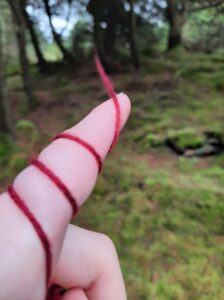
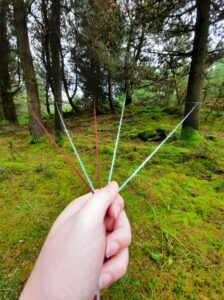
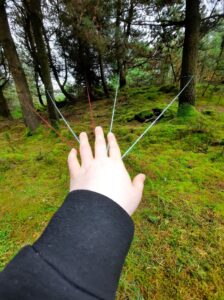
I then gathered some found objects from my walk and brought them home with me. Last week I began looking at Tony Cragg’s art and got interested in collections of objects, and thought this could be interesting alongside the idea of connection.
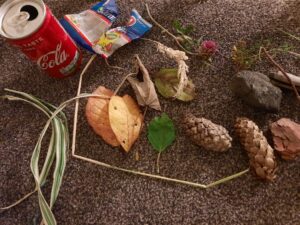
Building on my initial idea of suspending stones in the woods, I brought my findings from the woods and the town into my home and suspended them from my bannister.

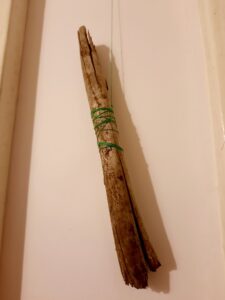
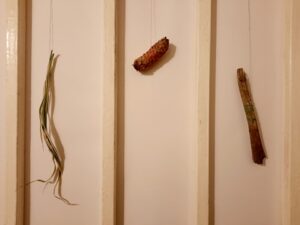
Next I played with creating almost a web with the wool in which to display some more of the items I found. I was just curious of what this would end up looking like and have also been fascinated with the idea of incorporating collections into art and thought this would be an interesting way to display my collection.
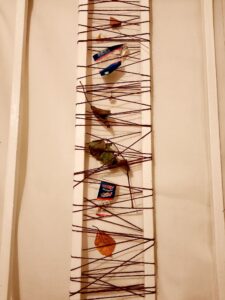
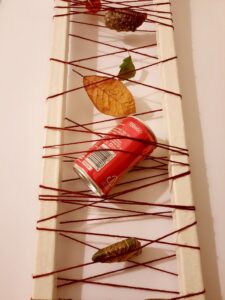
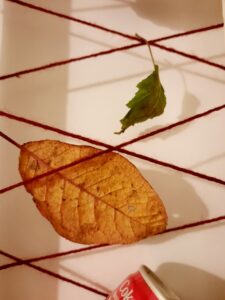
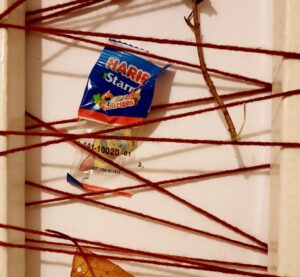
I did one on either side of the suspended objects and used the structure of the bannister to act as a frame. My overall display of my collection ended up looking like this:
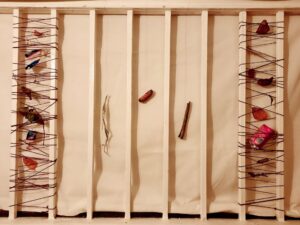
Secondary Research
This week I stumbled across this work by Anthony Gormley titled ‘Field for the British Isles’. The work consists of 40,000 terracotta figures, seemingly staring back at the spectator. This work has an incredible presence to it due to the sheer quantity of objects, and also the way in which it resonates with the sculptures of ancient peoples.

‘Field for the British Isles’, Anthony Gormley. 35,000 individual terracotta figures, each one 8 – 26 cm high. 1991.
I actually came across this work in an archaeology textbook describing the practice of ethnoarchaeology (the study of living cultures and peoples with the aim of understanding the past) and how our interpretations of the past can influence and inform the present.
As I have been interested in collection of objects, and as an archaeology student this work was particularly appealing to me. As I also came across it in a section about the study of ethnoarchaeology it gave me the idea to begin to collect objects from Fauldhouse and ‘study’ them as though I were trying to understand a lost culture.
Sources:
https://www.antonygormley.com/projects/item-view/id/245


